News 2014
The Recording of the Masses: Mathematical process helps to understand population signals in the brain
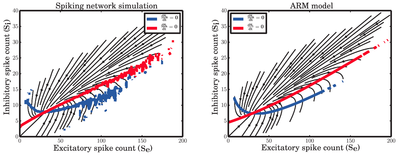
10.12.2014: When trying to read brain signals, especially those recorded in the brains of humans, neuroscientists face a great challenge: The signals picked up by surface probes or imaging methods typically do not originate from individual cells. Instead, they are reflecting the simultaneous activity of large neuronal populations, comprising thousands, perhaps even millions of nerve cells. But if the aim is to interact with the brain and its dynamic activity, e.g. through neurotechnological devices in deep brain stimulation, it is inevitable to understand what happens on the level of neurons and neuronal networks.
Heterogeneous networks underlie functional heterogeneity

04.12.2014: Simulation and analysis of neuronal networks explain distribution of orientation selectivity in the visual cortex
Faraway, so close! Combination of experiment and computation sheds light on the role of long-range connections in the brain
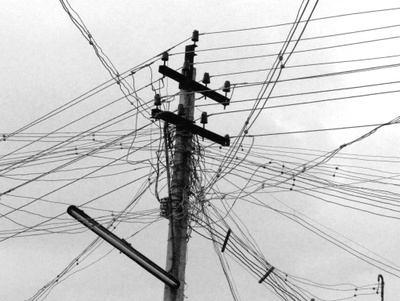
20.11.2014: The brain consists of large, interconnected networks of neurons. As a consequence, a single neuron can have connections to many thousands of other neurons. This means that it can receive input from many thousands of neurons and, likewise, can provide output to many thousands of neurons, not necessarily the same ones. Since the connectivity structure of these networks crucially determines how the brain processes information, scientists search for more detailed information about this structure as well as for more abstract models of its function.
Volker Pernice receives Hans Spemann Award: Former PhD student is honored for his outstanding thesis
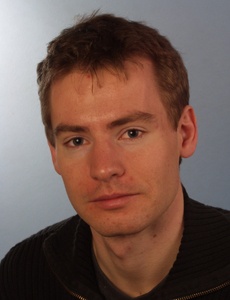
31.10.2014: Volker Pernice conducted his PhD studies at the Bernstein Center Freiburg, investigating the relationship between connectivity and activity in networks of spiking neurons.
Travelling by resonance: Scientists provide explanation how nerve cells communicate with each other over long distances

29.08.2014: How nerve cells within the brain communicate with each other over long distances has puzzled scientists for decades. The way networks of neurons connect and how individual cells react to incoming pulses in principle makes communication over large distances impossible. Scientists from Germany and France provide now a possible answer how the brain can function nonetheless: by exploiting the powers of resonance.
New research focus on brain diseases: Carl Zeiss Foundation supports Bernstein Center Freiburg with 750,000 €
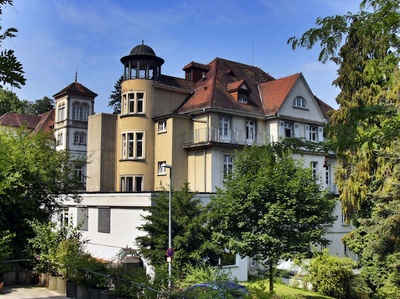
12.08.2014: Half a billion people worldwide suffer from neurological diseases. Their mechanisms on the level of nerve cells and neuronal networks, however, are only poorly understood. The Carl Zeiss Foundation supports the Bernstein Center Freiburg (BCF) at the University of Freiburg in developing and implementing new research approaches that employ computer-based and mathematical methods. Funds amounting to 750,000 € will allow the scientists to carry out important build-up work over the next four years.
Perfect timing: Computer simulations help to disentangle different ways to drive brain cells
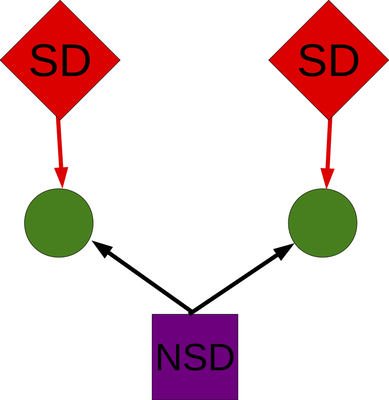
06.05.2014: Brain cells in the somatosensory cortex of rats (the area processing information about its own body) receive massive inputs from their neighbors, as well as from neurons in other brain regions. It is known that the timing of these inputs is essential to determine the strength of the response, which then represents the input to yet another set of cells. A team of researchers from the Bernstein Center at the University of Freiburg employed computer modeling to study two fundamentally different mechanisms of how brain cells operate under these conditions.
Simple Solutions: Dissecting the circuitry of sensory processing in recurrent networks

19.03.2014: When input from sensory organs like eyes and ears arrives in the cortex, it is edited by billions of neurons before shaping our percepts of the world. In the mammalian brain, important steps of this processing take place in the primary sensory areas of the neocortex. For processing the retinal image, for instance, some basic computations are performed in the primary visual area (V1), like extracting edge orientations or color information.
The symphony of epilepsy: An international research team shows that the glycine receptor may contribute to different symptoms of epilepsy
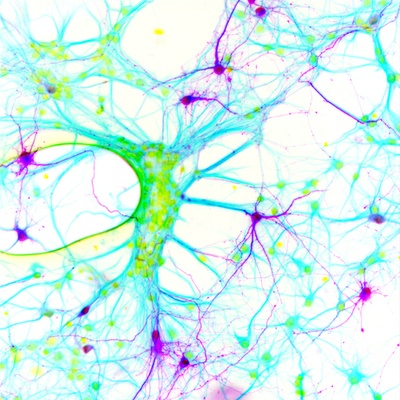
27.03.2014: Just as each musician in an orchestra contributes to the overall sound of a musical piece, different types of nerve cells in the brain make up the symphony of our consciousness. If this precise system is thrown off balance, diseases can develop. Together with colleagues from the Bernstein Center Berlin, the Bernstein Center Freiburg and eleven other institutions, Prof. Jochen Meier from the Max Delbrück Center has now gained new insight into epilepsy, showing why the disease may present with different symptoms.
A Sharper View into the Brain: Researchers from Freiburg are the first to detect the exact border between two important brain regions

14.03.2014: Deep in the human brain, two small but very important regions lie close together: the amygdala, which plays an important role in the generation and perception of emotions, and the hippocampus, which is a central switchboard for memories. These two small neighboring regions have until now been hard to tell apart in neuroimaging investigations of the living human because of their small dimensions, the amygdala being only the size of an almond. This difficulty is due to the insufficient spatial resolution of the common imaging methods for detecting the exact course of the fine border between the amygdala and the hippocampus. Owing to the innovative use of ultra-high-field magnetic resonance imaging to approach this problem, scientists from Freiburg and Magdeburg succeeded in a joint attempt in revealing the border between these brain regions with unprecedented clarity.
Prostheses with Sensory Feedback: Freiburg researchers have developed electrodes that help amputees to grasp at objects
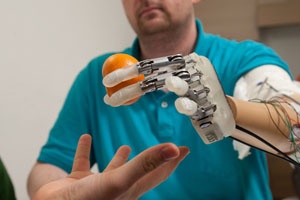
06.02.2014: An artificial limb that enables amputees to grasp at an object and feel it as though they were using their real hand: Thanks to Freiburg microsystems engineer Prof. Dr. Thomas Stieglitz and the international research group participating in the project LifeHand2, this has now become a reality. The scientists present the findings of their project in the journal Science Translational Medicine.

